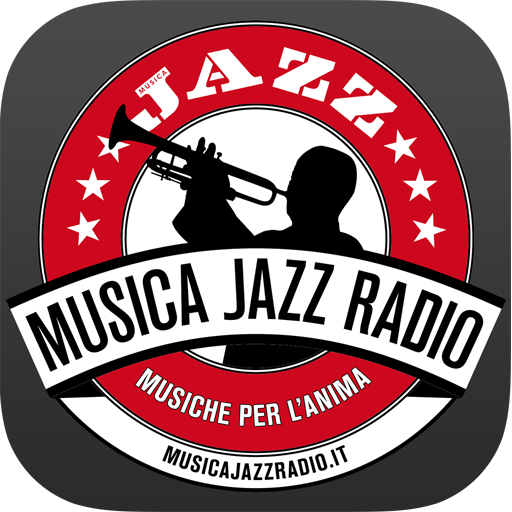
http://www.judycantor.com/moxie/music/Cuban/his-name-is-federico-brit.shtml
Posted Friday, November 23, 2007
E-mail this page Printer-friendly page
Violinist Federico Britos has played with Duke Ellington, Astor Piazzolla, Dizzy Gillespie, Joe Lovano, Charlie Haden, and Cachao, among others, all the while sustaining a career as a symphony concert master and a leader of various jazz ensembles and even, currently, a danzón sextet. Britos is a musician's musician, a hard-working sideman in Latin, jazz, and classical circles, a composer and player who tends to purposefully describe his projects as ''non-commercial.'' Haden has compared his jazz violin playing to that of the Ellington band's Ray Nance, and Paquito D'Rivera has credited him for bringing the bossa nova to Cuba. But to audiences in Miami and elsewhere, Britos is probably best known simply as ''that violin player,'' as in, ''That violin player is amazing!,'' the sort of whispered comment that inevitably greets his appearance on stage.
''Federico has such a beautiful sound. It's so romantic it makes you want to cry,'' says the celebrated Cuban pianist Bebo Valdes. ''Not just any violinist can play like he does.'' Valdes and Britos were nominated for a 2004 Latin Grammy in the Best Latin Jazz Album category for their duet CD We Could Make Such Beautiful Music (the Grammy winners had not been announced at press time).
Nat Chediak, who produced the album with Fernando Trueba for Trueba's Madrid-based Calle 54 label, first worked with Britos when he called him to take part in a charity jam session held in Cachao's honor in 1994, a year after Britos moved to South Florida with his family from Venezuela. In 2002 Chediak enlisted Britos to play on Lagrimas Negras, the surprise hit CD from Valdes and flamenco singer Diego ``El Cigala.''
After a memorable concert of songs from that album at the Coconut Grove Playhouse, Britos went into the studio with Valdes, recording most of the tracks on Beautiful Music in one take, ''playing as if we were before a small audience.'' The CD was nominated for the Latin Grammy even before its release in the United States. ''I'm very happy to have played a small part in putting Federico out there,'' Chediak says. ``I think for the longest time he was musically Miami's best kept secret.''
On a recent morning, between gigs in Japan and New York with the long-running revue Forever Tango, Britos is at home, a comfortable town house in a gated community in Kendall. As Olympic commentary buzzes on a TV in the next room, the musician describes his career as ''a trip around the world,'' referring both to his varied repertoire and to the fact that he's been touring professionally since he was 15 years old. While people often assume Britos is Cuban or Argentine, he is from Uruguay, where at a young age he began studying classical music and playing tangos. As a teenager he was already being hired to travel with tango orchestras, Latin bands, and chamber groups. In Montevideo, he immersed himself in the city's superior jazz scene.
''There were three jazz clubs, and these weren't commercial venues, but actual clubs where a group of musicians and people interested in jazz paid the rent so they could have a jam session every month,'' Britos, who is now in his 60s, explains. ``There were a piano, bass, and drums installed in the place, and a recording library so we could hear the latest albums. All of the foreign musicians would come to jam, so I was able to play with Ellington, Gillespie, Benny Goodman, Woody Herman. They all came to Uruguay.''
An invitation to perform in the orchestra of the Ballet Nacional de Cuba in the early '60s led to an extended stay on the island, where he would meet his wife. In addition to his job as first violin accompanying Alicia Alonso's ballet company, Britos recorded Cuban film soundtracks. ''I met all of the most important musicians whose records I heard in Uruguay,'' Britos recalls. ``Many of them I would later meet again in Miami.''
In Havana, he put together a jazz group that included the then-fledgling bass player Cachaito Lopez, son of mambo pioneer Orestes. The band played weekly on a television show until he was told American jazz could no longer be played on the government-run TV station. More politically correct at the time -- and innovative in Cuba -- was his other group, which played Brazilian music. ''A lot of people don't know that, in Uruguay, we were among the first consumers of bossa nova outside of Brazil,'' he says.
Britos and his family left Cuba for Peru in 1974, where he took a job as concertmaster for a symphony orchestra, later moving on to work with symphonies in Venezuela. At the same time, he continued to perform popular Latin American music and jazz. But he recognized that if he wanted more opportunities to perform with top jazz artists, he had to come to the United States. So in 1993, he gathered his family, which now included his two sons and a pregnant daughter-in-law, and came to Miami, where his Cuban in-laws had settled some years before.
''We came without anything, just the family,'' Britos recalls. In typical fashion, Britos landed on his feet, becoming concertmaster with the Miami Symphony Orchestra and re-establishing contact with many of his Cuban colleagues who had since moved here. Currently, Britos' hectic schedule includes his role as concertmaster of Ars Flores, a new symphony orchestra based at Nova Southeastern University. And about five years ago, Britos formed Danzón By Six, dedicated solely to performing Cuban danzón.
''Danzón is one of the most elegant Latin American genres,'' Britos says. ``Together with the tango, it has one of the most complex structures, very similar to the structure of classical music, because it comes from the French contradanza that was historically played at balls in Cuba. Danzón has a lot more to say than other musical structures, and you can say more with it. It also allows you to see how far you can go with each solo -- in my group, everyone is a soloist.''
Danzón By Six has just recorded its second album, to be released in October by Pimienta Records. The band will perform this Saturday, headlining the Discover Miami street party in Little Havana.
''The point is for people to enjoy themselves and, for the few dancers who still know how to dance the danzón, to dance,'' Britos says of this weekend's concert. It's also an opportunity for those unacquainted with the violin player to hear his sublime sound.
Amazon.com's Best of 2001
Charlie Haden has a long-standing interest in Cuban music, first touched on with his Liberation Music Orchestra over 30 years ago. Nocturne expands on that affinity and on the bassist's relationship with Cuban piano virtuoso Gonzalo Rubalcaba, who introduced Haden to the tradition of the Cuban ballad, or bolero. The result is this very unusual mix of slow- to medium-tempo pieces, limpid, sometimes almost somber songs that are filled with yearning romanticism, wistful lyricism, and an inner light. The program includes five Cuban ballads, including "Tres Palabras," almost a jazz standard after recordings by Coleman Hawkins and Joe Henderson, and four from Mexico, among them Arturo Castro's beautiful "Yo Sin Ti." To this, Haden has added two originals and Rubalcaba one, and they're perfectly continuous with the traditional material. Rubalcaba is clearly devoted to these melodies, his usual pyrotechnic flights replaced by subtle harmonic shadings that enrich the original tunes. Haden seems to sculpt these songs anew in his lower register, while drummer Ignacio Berroa adds varied and lilting percussion patterns.
The music is enhanced by a series of superb guest spots. Joe Lovano adds a Getz-like, lyric transparency to four of the songs (and they're all songs, whether they have words or not), while David Sanchez adds his weightier tone to two. Pat Metheny's acoustic guitar makes "Noche de Ronda" a moonlit reverie, while Uruguayan violinist Federico Britos Ruiz adds his own sweetly idiomatic touch to three tracks. Three pieces also gain increasingly dark hues from Rubalcaba's cello-thick string arrangements. Something of a departure for both Haden and Rubalcaba, Nocturne is true to its origins while creating its own ineffable moods. --Stuart Broomer
Nocturne was the winner of the Best Latin Jazz Album GRAMMY at the 2002 GRAMMY AWARDS.
Personnel
Charlie Haden — bass
Gonzalo Rubalcaba — piano
Ignacio Berroa — drums, percussion
Federico Britos Ruiz — violin












%20Affiche.jpg)
















http://rapidshare.com/files/187000600/Charlie_Haden___Gonzalo_Rubalcaba_Nocturne-1.rar
ResponderEliminarhttp://rapidshare.com/files/187045745/Charlie_Haden___Gonzalo_Rubalcaba_Nocturne-2.rar
http://rapidshare.com/files/187543580/Charlie_Haden___Gonzalo_Rubalcaba_Nocturne-3.rar